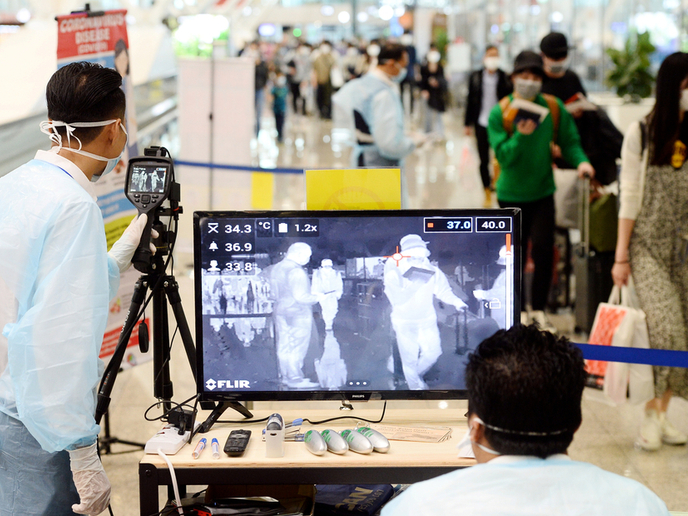How to improve preparedness for pandemics like COVID-19
Countries have closed their borders in an attempt to curb the spread of the coronavirus and holidaymaking seems like a distant memory for now. Though it’s difficult to accurately predict how life will be after the lockdown ends, travellers will most likely face strict rules and greater scrutiny to avoid future outbreaks of infectious diseases. Transport hubs like airports and railway stations – the most likely hotspots for fast disease transmission – are in the spotlight amid efforts to tackle COVID-19 and follow the traces of other recent outbreaks like the Ebola virus disease and the severe acute respiratory syndrome epidemic. Having recognised the need to enhance the resilience of European urban mass transport and air traffic against pandemics and other high-threat pathogen incidents in transport hubs, the EU-funded PANDHUB project developed a toolbox with measures that address each phase of the security cycle: threat assessment, prevention, preparedness, response and mitigation, and recovery. Project results could help keep the public transport sector running in the event of future pandemics or outbreaks of high-threat pathogens. PANDHUB supported transport operators and relevant stakeholders in developing pathogen preparedness and response plans. It succeeded in deepening the understanding of disease transmission mechanisms in transport environments by developing an IT system for data collection, a threat assessment tool and a framework for the identification of hotspots. It also developed guidelines for the protection of passengers and infrastructure as well as for decontamination. PANDHUB’s deliverables have been deployed and are currently being used by Finnish authorities, amongst others.
Useful outcomes
Amongst PANDHUB’s deliverables with particular relevance to combatting COVID-19 was the development of customised guidance to assist hub operators with managing communicable disease public health events. This was achieved by providing pragmatic advice on infection prevention and control and developing benchmarks to optimise preparedness. The bespoke guidelines were built around five common control principles: ventilation, exclusion of symptomatic persons, separation of international and domestic travellers, interpersonal distancing, and measures to reduce indirect contact transmission. The disinfection and decontamination guide is yet another output that could be useful in tackling COVID-19. It involves reviewing suitable options for disinfection and decontamination in the event of a high-threat pathogen or biohazard contamination. Possible routes of infection transmission that might occur at transport hubs include inhalation of infectious aerosols, direct contact with microbe-containing material such as blood, faeces, vomit and respiratory secretions, and indirect contact with infectious material on surfaces. The guide facilitates selection of the most appropriate approach for specific types of incidents, taking into account the target microbe and extent of the contamination and personal protection. In the context of explaining the modes of transmission of the coronavirus like respiratory or aerosol transmission that could occur when an infected person sneezes or coughs, PANDHUB partners recently posted two animated videos on the project website(opens in new window). The first animation(opens in new window) illustrates how far droplets fly after sneezing, while the second animation(opens in new window) shows that covering your mouth reduces the range of expired droplets. The PANDHUB (Prevention and Management of High Threat Pathogen Incidents in Transport Hubs) project ran between 2014 and 2017. For more information, please see: PANDHUB project website(opens in new window)



